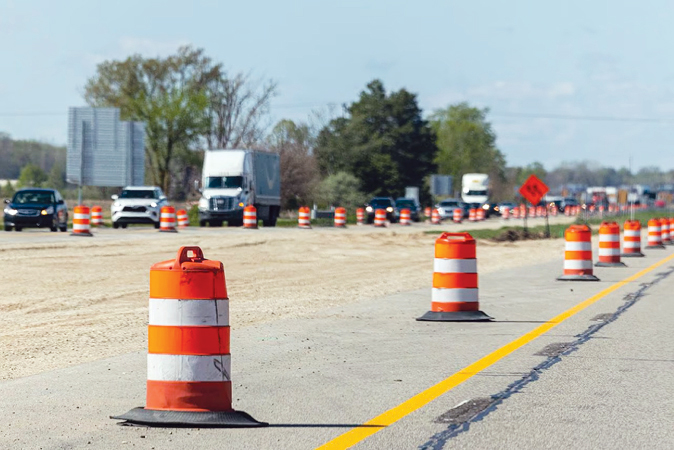|
By Dean Croke, Principal Analyst,
DAT Freight & Analytics
Truck drivers joke that there are two seasons in the United States: winter and construction. Unfortunately, inescapable year-round delays from bad weather and perpetual roadwork are no laughing matter.
According to the latest Global Traffic Scorecard from INRIX Research, U.S. drivers spent a total of 4.8 billion hours stuck in traffic last year at a cost of $81 billion. The typical commuter in this country lost 51 hours to congestion in 2022, up from 36 hours in 2021.
Truckers aren’t your typical commuter.
The ability to provide on-time dock-to-dock service is what sets apart truckload carriers from other modes of transportation, so it’s essential to stay on schedule. Most long-haul drivers are paid by the mile, so anything that cuts into the distance they can cover during their regulated workday makes the job less lucrative and satisfying. They need to move to earn a living.
Truckers also have a unique view (and feel) of the nation’s infrastructure. Rough surfaces, lane restrictions, and detours can stretch for miles and contribute to the physical and mental demands of driving a truck. And when you’re stuck in a construction zone, it’s hard not to think about all the excise taxes and other fees that truck owners pay to help finance state and federal highway programs.
Tight bottlenecks
INRIX used anonymized GPS data from telematics devices in cars and trucks to rank highway corridors based on time spent in traffic. Not surprisingly, the biggest bottlenecks are in the biggest metro areas.
In the U.S., drivers in Chicago (155 hours) lost the most time to traffic congestion and were only an hour behind London for the most congested city in the world. Boston (134 hours) and New York (117 hours) ranked fourth and fifth in the world, respectively.
INRIX also ranked specific highway corridors for time lost in traffic. The worst was a 30-mile stretch of I-95 from Stamford to Norwalk, Conn.—a driver making that round-trip 240 workdays a year spent an average of 256 hours sitting in traffic last year. That’s almost 11 days.
New highway projects
Spending on highway projects resulting from the historic and bipartisan federal infrastructure bill, officially known as the Infrastructure Investment and Jobs Act, is becoming evident along our major freight corridors.
Passed in 2021, the law reauthorized the Surface Transportation Act for five years and added $110 billion in new spending for roads and bridges. The
|

money is available to state and local governments through formula funding, where each state gets a fixed portion of the dollars, and grants, which governments compete for. Money is also available for “mega projects” that are otherwise too big or complex for states to fund themselves.
One such project involves constructing a double-decker bridge next to the existing Brent Spence Bridge, which spans the Ohio River between Cincinnati and Covington, Ky. This stretch of I-71/75 sees over $400 billion in freight movement annually and is among the worst truck bottlenecks in the nation. The Brent Spence Bridge would be used for local traffic to exits in Covington and downtown Cincinnati while the new bridge would act as a bypass.
All told, the federal government will pay $1.6 billion of the $2.7 billion in total project costs. Groundbreaking for the project could be as soon as November 2023 with construction beginning in early 2024.
Most of the project is expected to be completed by 2029—meaning at least five years of orange cones on one of the nation’s busiest freight corridors.
Back on the road
During the COVID pandemic, the number of miles traveled declined as more people worked from home. Today, after two years of less congestion and higher average road speeds, truckers are seeing more typical patterns.
Many employers are moving back to having most workers commute to work five days per week. Of the 295 U.S. urban areas analyzed by INRIX, 179 are still below their pre-COVID normal commute times while 116 have surpassed them. Of the top 50 ranked areas, just 12 have exceeded 2019 levels, a sign that smaller, less-congested cities have already “returned to normal” in terms of traffic.
If you work in trucking, construction and the related delays are bitter pills to swallow. But it’s good medicine if the payoff is a system of smooth, safe roads and bridges that can handle the freight traffic.
Winter, however, is another matter.
Dean Croke is the principal analyst at DAT Freight & Analytics, which operates the transportation industry’s largest marketplace for spot truckload freight and the DAT iQ freight-data analytics service.
|


